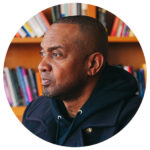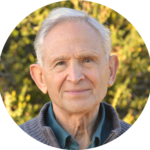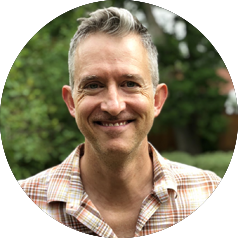Meaning Making and Intergenerational Trauma – Keith Kurlander & Will Van Derveer – HPP 117
What exactly is trauma? How many people actually carry trauma in their bodies? How do we know the actual source of our trauma’s when it’s not a specific event that happened? What if the source of one’s trauma is intergenerational—passed down from previous generations?
In today’s episode, we take a deeper look at these difficult questions that need answers in order to heal on the personal and collective level in society.
Show Notes:
The Concept of Trauma – 01:46
trauma can be defined as a pattern of dysregulation in the nervous system, which is very different from defining trauma as an event. And I like this way of defining trauma, because some people who have PTSD or who have trauma will come in and say, well, how come I have PTSD from a car accident where, you know, my friend had a car accident and didn’t get PTSD from the car accident? And it’s confusing for people.
Traumatic Pattern of Dysregulation – 06:00
And then very interesting work with polar bears, and other animals, seeing how they shake off the activation, the autonomic activation, the sympathetic nervous system activation. And then returning back into regulation or turning back into balance or coherence is something that the neurofeedback people will use the term which reflects a dynamic balance between parasympathetic and sympathetic nervous system. So this whole sequence of events is natural and healthy. But that sequence gets interrupted in an event that produces a traumatic pattern of dysregulation.
Dissociation is A Survival Strategy – 10:13
But in fact, it’s an important nuance that dissociation is a survival strategy that in terms of ego defenses, it’s one of the key early primitive ego defenses is that we have the capacity inside of our mind to check out from something difficult or painful or overwhelming, that’s occurring. But as you said, what hasn’t been digested and what hasn’t been directly experienced through presence remains. It’s sort of like throwing something in the basement. Like sometimes I throw my clothes down the stairs to the basement where the laundry room is. And then I open the door, and there’s clothes everywhere on the stairs. So it’s like that kind of metaphor of your mind where there are things in there that haven’t been dealt with that are going to have to be dealt with later.
The Statistics Might be Wrong – 18:10
But I think it’s a really important piece, again, that you’re bringing here that most people think about trauma as like only a few people have it, or, you know, there’s a statistic that 10 million people in the US have PTSD, and there’s 400 million of us. So that would be like, you know, one in 40, or something like that. But it’s really, I think it’s a myth, to be honest, that only a few people that you meet, or that you know, are carrying trauma.
First Ever Glimpse of Intergenerational Trauma – 23:06
First time I clued into intergenerational trauma was when I did LSD. And I hadn’t done LSD. I did LSD, maybe two times prior to that. I haven’t done a lot of LSD. Maybe I did another one or two times after that. And so I was on LSD. And I’m sitting in a room with three other people. And all of a sudden, they just start seeing swastikas everywhere. And they start flying at me and they’re cutting me. And I was totally afraid.
Full Episode Transcript
SPEAKERS
Keith Kurlander, Dr. Will Van Derveer
Keith Kurlander 00:10
Thank you for joining us for the Higher Practice Podcast. I’m Keith Kurlander with Dr. Will Van Derveer, and this is the Podcast where we explore what it takes to achieve optimal mental health. Hey there, everybody, welcome back. So today we’re going to dive into the topic of trauma. But we’re really going to focus today on a conversation about understanding how to conceptualize what the source of trauma is, and how relevant is understanding the source of a personal trauma in healing trauma. We’re going to talk about that, when we’re gonna get into the sources of trauma, you know, within a lifetime and intergenerational trauma. So beyond one lifetime, and you know, a lot to sort of unpack here. So it’s going to be a definitely very interesting dive into just understanding this concept of trauma. And we’ll probably also want to define trauma, right Will?
Dr. Will Van Derveer 01:20
Oh yeah, I was just gonna say that I think is the first starting point.
Keith Kurlander 01:24
Yeah, yeah.
Dr. Will Van Derveer 01:25
Yeah.
Keith Kurlander 01:25
Why don’t we start there together? Why don’t you take a stab at that? And then I’ll fill in any blanks that I can.
Dr. Will Van Derveer 01:34
Yeah, I like this conversation. We’ve been fortunate to have a lot of contact with Peter Levine and from somatic experiences. And one of the things I learned from Peter is that trauma can be defined as a pattern of dysregulation in the nervous system, which is very different from defining trauma as an event. And I like this way of defining trauma, because some people who have PTSD or who have trauma will come in and say, well, how come I have PTSD from a car accident where, you know, my friend had a car accident and didn’t get PTSD from the car accident? And it’s confusing for people. So we could talk more about that. But I really like talking with my patients about the pattern in the nervous system.
Keith Kurlander 02:28
I think I mostly conceptualize it that way for myself and people I talk to about it now. These are certain types of patterns of the nervous system, right? A nervous system that’s not operating in kind of synergy with the different systems, the subsystems of the nervous system. It’s kind of like an instrument that’s not tuned.
Dr. Will Van Derveer 02:55
Right.
Keith Kurlander 02:56
Right, like you both broke a string or you went out of tune. And there’s a lot of sort of chaotic frequency going on in the nervous system. I like this definition of trauma as a nervous system dysregulation. But I think there’s also some kind of psychological aspect typically, that expresses itself into, because I think there’s probably other types of dysregulated nervous systems that wouldn’t just be trauma. I mean, there’s nervous systems that are injured, let’s just say that, that aren’t necessary, you know, neurological injuries and stuff to the nervous system that can play out differently. Right? So we’re talking about a specific type of issue going on in the nervous system.
Dr. Will Van Derveer 03:47
Yeah, It’s not just a generically injured nervous system. It’s a very particular pattern of unregulated signaling in the nervous system. And I agree, it tends to have a psychological component as well, of course.
Keith Kurlander 04:04
There’s another aspect of, so we have the nervous system, which is sort of the biological marker, you could say, which can be measured to some degree, right?
Dr. Will Van Derveer 04:14
Absolutely.
Keith Kurlander 04:15
People are doing that work. Oh, yeah. That works getting better and better over time by measuring the nervous system, physiological responses, to try and hook someone up to Neurofeedback and things where you could be like, look, this person has this sort of traumatized pattern in their nervous system. There’s another interesting aspect for me in the conversation of what causes trauma. So you have this dysregulated nervous system. And then, you know, as we’ve talked to Peter over time, trauma is not necessarily an event because two people could have the same event and not be traumatized. But something happens during the event that turns into trauma for one person and doesn’t for the other right?
Dr. Will Van Derveer 05:02
Right.
Keith Kurlander 05:03
It’s something that happens during the event or string of events, especially in more complex traumas string of events, usually. So we could talk about that a little too. I think it’s important to mention what’s happening during the event, you know, the nervous system isn’t resetting. Right?
Dr. Will Van Derveer 05:27
Yeah, yeah, there’s a whole sequence of events that mammals go through from moving out of a sense of relaxation, a sense of security in your environment, into now detecting a threat, and to now beginning to activate, usually, unconsciously, because these things are very sudden, right? When you get attacked or something sudden happens, moving into a sequence of getting away from the threat or fighting, fight or flight. And then very interesting work with polar bears, and other animals, seeing how they shake off the activation, the autonomic activation, the sympathetic nervous system activation. And then returning back into regulation or turning back into balance or coherence is something that the neurofeedback people will use the term which reflects a dynamic balance between parasympathetic and sympathetic nervous system. So this whole sequence of events is natural and healthy. But that sequence gets interrupted in an event that produces a traumatic pattern of dysregulation.
Keith Kurlander 06:43
Yeah, yeah. And the interruption, I mean, one understanding I have, from my SE exploration and others is that kind of one of the hallmarks of the inner eruption process is dissociation of some form, where presence is lost to an experience that seems non digestible, to stay present with. These are all things that we’re not thinking about when this happens. But whether it’s, you know, during response system, that’s, you know, we’re going into fight flight, freeze, collapse, whatever it is, but we lose presence, and that dissociative mechanism, you know, where we disconnect from the event in some way that keeps the memory in our system of the event in a usually non descriptive way. But sometimes we have, you know, PTSD and flashbacks and things, but usually that the memories are stored in our body, right?
Dr. Will Van Derveer 07:47
Yeah.
Keith Kurlander 07:48
Would you say that?
Dr. Will Van Derveer 07:49
Well, I think that yeah, helplessness is probably the aspect that’s not, you know, it’s very hard to stay present with that severe level of helplessness. I mean, dissociation obviously has another function at the moment. Right. There’s a healthy function to it in a certain way, when something’s happening to us that is unbearable. No, I agree with how you said it. I would add that it’s not always the case but it’s often the case that that dissociation you’re talking about that can occur during a threat response, leading into a traumatic patterning that’s leftover, often is paired with a sense of helplessness in the moment. So that helplessness could take the form of for some of my patients, I’m driving a car and it starts to slide on ice, there’s a helplessness because I can’t control the car anymore. Or a victim of sexual assault might be held down and immobilized during the assault. So there’s a feeling of helplessness. So helplessness is, it’s not always there, but it’s often there in this moment of dissociation. Yeah.
Keith Kurlander 09:09
The brain, the psyche as a way of dealing with unbearable experiences. Yeah, it’s but the challenge is, then we can stay traumatized from staying dissociated from an unbearable experience.
Dr. Will Van Derveer 09:25
Yeah, I’m glad you brought that up because dissociation sometimes gets a negative connotation that we think it’s associated with trauma and so we think of it as sort of a pathological event that we dissociate. But in fact, it’s an important nuance that dissociation is a survival strategy that in terms of ego defenses, it’s one of the key early primitive ego defenses is that we have the capacity inside of our mind to check out from something difficult or painful or overwhelming, that’s occurring. But as you said, what hasn’t been digested and what hasn’t been directly experienced through presence remains. It’s sort of like throwing something in the basement. Like sometimes I throw my clothes down the stairs to the basement where the laundry room is. And then I open the door, and there’s clothes everywhere on the stairs. So it’s like that kind of metaphor of your mind where there are things in there that haven’t been dealt with that are going to have to be dealt with later.
Keith Kurlander 10:31
Yeah, and so another kind of nuance here is that, in order to resolve these traumas, at least in modern trauma therapies. It’s not always necessary, sometimes not even helpful to revisit the actual content of the trauma, although to some degree that usually gets revisited. But obviously, reenacting traumas isn’t typically how this work is done anymore. But usually, the content is visited somehow. But it seems like the most important part of the work and healing the trauma is somehow being able to access the sensory experience that was overwhelming. And being able to digest that sensory experience. So there’s still a memory, typically in us of a sensory experience of the thing that we, you know, saw as traumatic that we haven’t confronted, right? And that’s just sort of like lingering in our bodies, in our systems, and there’s ways to get into that in very clever and soft and graceful ways to get into that experience so that it’s digestible.
Dr. Will Van Derveer 11:48
Right.
Keith Kurlander 11:48
Do you agree with this way of talking about it?
Dr. Will Van Derveer 11:50
Yeah, it’s a really important piece. I don’t think it can be overemphasized that going on an expedition to try to locate the event that underlies the traumatic patterning in the nervous system isn’t what produces the therapeutic effect. In other words, we can work with and heal and integrate and digest traumatic events by working with the state, like you’re saying, working with the somatic state that was associated with the event in which, for people with trauma in their system, they often feel that state coming forward. And some people would say, and I agree that the reason that state keeps coming forward is because it’s unintegrated and it needs to be healed. It’s coming forward for a reason. But it feels like intrusive thinking. It feels like it can be cold sweats, it can be panic attacks, it can be any number of really uncomfortable experiences, nausea, disgust, you know, so many different experiences.
Keith Kurlander 13:00
Right. And, for me, kind of, let’s bring this a little more on the ground now. And let me just kind of throw out a few things. So obviously, there are singular events that are traumatic, that person got in a massive car accident, and, you know, they’re having PTSD about crashing, right. And that has its own particular flavor of how to help someone process and digest that experience. So they’re singular events, there’s events that are violations to our bodies in a different way, sexual events, from string of events. There’s all kinds of things that can be traumatic ultimately, for a person. And then there’s the complex trauma events of childhood usually is what that term is typically used for, where it’s, you know, long standing emotional, sometimes physical injuries are happening, usually by primary caregivers. That’s not one event, right? That you’re just gonna like, that was the thing in your head, that could just be sort of like a big kind of picture of so many events. And like, that’s a big thing, this big thing. So like returning to events, they are sometimes helpful, but it’s also typically a lot more amorphous when we’re talking about complex trauma like just revisiting events. And then there’s this other concept that’s getting a lot more traction to look at, which is intergenerational trauma. So, you know, events that happened in our lineage prior to our incarnation, right, prior to our conception. And so that’s a whole nother area. So I’ll pause there, but I want to talk a little bit about intergenerational trauma a little bit too, but I don’t know where you want to take all that.
Dr. Will Van Derveer 14:59
Yeah, and those layers of depth in the psyche in the collective unconscious, you could say, whether it’s within your own lineage or within the storehouse of human experience outside of your own personal genetic lineage, there can be plenty of material that can come up when people are in a healing process.
Keith Kurlander 15:27
Definitely, I mean, there’s cultural trauma, there’s just, you know, societal traumas, systemic, right, you know, structural, racism that make violations of trauma. So, I want to talk a little bit about intergenerational trauma for a moment. And I mean, for myself, you know, me pretty well. But I had probably a pretty high level of a traumatized nervous system, like, in terms of how traumatized nervous systems get I was pretty up there, right? What would you say about yourself in relation to, you know, your upbringing and the level of trauma in your nervous system? Just curious what you would say about yourself?
Dr. Will Van Derveer 16:05
Well, it took me a long time to acknowledge how much trauma there was in my body from childhood. And it wasn’t until I was in my 40s and I had already been in trauma therapy for quite a few years before I had a series of experiences that really cracked things open for me and showed me that there was a tremendous amount of lockdown and kind of not knowing quote, unquote, like my ego defenses were very strong and worked really well and kept me unaware of how much was going on in my childhood.
Keith Kurlander 16:45
Yeah, I mean, I think that would be my sense of you if you also had pretty high levels of dysregulation, right, in your nervous system that we would call trauma. I think it’s really important to say that, you know, I don’t view trauma as like this, like, you know, negative, horrible thing. And I think that it’s important to recognize that most human beings have a big piece of work to do around some aspect of the nervous system that’s traumatized and dysregulated. Most human beings don’t just kind of skate through life and don’t have that. You know, and I think that there’s sometimes stereotypes of like, well, you didn’t have the big event, it’s not, you know, it’s not fair to like, throw around the terms, if there wasn’t this event that’s so horrible. Or the thing is, is that in the end, that the nervous system shows that I think many, many humans are holding trauma from wherever that needs to get worked through. Would you agree with that?
Dr. Will Van Derveer 17:52
Absolutely. Our history as human beings is quite violent, and dark in a lot of ways. There’s also beauty in it as well. So I don’t mean to rule that out. But we’ve been through, you know, a lot as a species. But I think it’s a really important piece, again, that you’re bringing here that most people think about trauma as like only a few people have it, or, you know, there’s a statistic that 10 million people in the US have PTSD, and there’s 400 million of us. So that would be like, you know, one in 40, or something like that. But it’s really, I think it’s a myth, to be honest, that only a few people that you meet, or that you know, are carrying trauma, I think it’s way more realistic, what you’re saying, that all of us have something that we’re holding.
Keith Kurlander 18:48
Yeah. Again, maybe it doesn’t show up in the symptom cluster that we see in the DSM. But I think it’s much more realistic to say like the human experience, part of the human experience. I mean, one part of you and experiences, we get to, like, soak this thing in, and it’s amazing. Another part of the human experience is like, we’re working through releasing trauma in our nervous system, that’s an aspect of the human experience. And some people will learn about that and learn how to do it. And other people will avoid that. And you know, be ruled by it. Yeah. Yeah. So for me what was interesting in my path, where I had plenty of plenty, as you know, of childhood early childhood experiences, to sort of, I could point my finger to so many I could point my finger and be like, well, that’s the trauma, right? There’s so much there that I could point my finger at. But some of my most significant healing was intergenerational trauma work for myself. I didn’t spend hundreds of hours looking at, you know, scenarios I was in with my parents. I’ve done some of that, but it wasn’t, you know, I spent way more hours looking at my intergenerational trauma. Now, that’s really interesting. I could say a little more for the listener about what I’m talking about. Right. So Jewish, and for me, I got clued in for some reason to that there was intergenerational trauma in my system around the Holocaust. I didn’t have, you know, very direct descendants that were there. I had indirect sessions that were there. But I got clued in a long time ago. Now. 15 years ago, I don’t remember what it was that this is, you know, crushing me, right? I mean, I’m like a trauma case, like I was mentally ill, I was sick, right. So I was the DSM definition, with a lot of others in there. But what was so fascinating is the pieces that helped me with the source material that I identified as some of my biggest levers, warning him about this lifetime, yet, maybe a lot of what I was dealing with was this lifetime. That’s up in the air. For me, it’s very possible that my nervous system. Memory was this lifetime. But what helped me a lot to really move to leverage here was to really focused on this holocaust piece. And I can say more about how I did that. But to me, that’s very interesting, because it was a source that for whatever reason, allowed me to contextualize the sensory experience that was not digestible in a way that I was actually able to relate to that source, though. I don’t know why that was, but maybe that was the source. That’s another possibility.
Dr. Will Van Derveer 21:55
And the Holocaust was one of many pogroms, right for the Jewish people. I mean, I’m not Jewish, but my understanding is, you know, there’s been a pattern and persecution that’s a lot older than just 20th century,
Keith Kurlander 22:12
That’s correct. Especially in well, yes and for the last six to 800 years, definitely intensely in Europe. And when I did the work I kind of went further back a little bit myself. And the bulk of the releases for me or about the Holocaust, for whatever reason, but I did have a few releases. I mean, I contextualize this a little more, as you know, so I, I started getting clued into this, I started sort of working with different practitioners, SC and some other somatic people and all these things to try and access this work. The first time I actually clued into this, but I blew it off. The very first time I clued into this was way before way earlier. I was 20. I was 21. First time I clued into intergenerational trauma was when I did LSD. And I hadn’t done LSD. I did LSD, maybe two times prior to that. I haven’t done a lot of LSD. Maybe I did another one or two times after that. And so I was on LSD. And I’m sitting in a room with three other people. And all of a sudden, they just start seeing swastikas everywhere. And they start flying at me and they’re cutting me. And I was totally afraid. And like I didn’t, I wasn’t in a group to process that, you know. So I’m sitting there and I’m getting attacked by these, like ninja stars like swastika, and they’re all over the walls. You know, and I remember being like, all I took away in that moment, because there was no talk of intergenerational trauma. I mean, there was no basically no internet yet. Like, I have no information, right? The only information I had was my own experience at that moment. But I remember leaving that experience going like, wow, this, this event that happened in the Holocaust, like I think it’s impacting me, and that was it. I just like, I think that’s doing something to me. That sounds really scary, right? I kind of said that to myself. And it was over and I just kind of moved on in my frozen nervous system that I was already in, you know, for years. But I clued into it then and than this next round when I you know, started in my early 30s where I had some good people, some good therapists healers around me to help sort of inquire just very softly and it opened up a massive rabbit hole for me that led to me, going out to Poland to Germany and visiting the camps. And when I was in the camps I really felt The least again, I’m saying this was a source. But, you know, I really felt something finally made sense for me like, Wow, all this confusion and all this just deep, extreme trauma in my system. I didn’t grow up in a horrible situation whatsoever, right? It started making sense when I was walking through the camps. Tell a quick story. So when I first got to the camp, Oakland walled, I think that’s how you say it, which was like the headquarters. It was one of the headquarters for Hitler. And I get to the camp, and tell you this story? I may have told you this story.
Dr. Will Van Derveer 25:42
I don’t think so. I don’t think I’ve heard this story.
Keith Kurlander 25:43
Okay, so I walk up to the camp. And the fog was so thick that I couldn’t see more than a couple inches in front of my face. I couldn’t see my feet. That’s how thick the fog was. So I’m walking into the camp through the gates, I can’t see anything, I have no idea what I’m walking on. I have no idea where I’m going. And all of a sudden, I had this full body knowing of like, this is fucking terrifying. And this is how I’ve been feeling. And this is nothing compared to what people were feeling. It was like, this is like, this is I just had this moment of this is nature’s way of showing me a hairline glimpse of the level of intensity that was here. And, you know, I was just like, blown open, and I couldn’t walk, I was basically walking around, blindfolded, trying to find things. And this went on for like 30 minutes until the fog lifted. So anyways, I went through this big journey there. And, you know, there were a number of things that resonated with my whole body where I was like, That’s my body’s feeling. And it was like, the first time I was feeling my body again. And in the pain, it was like, oh, that’s the pain, like, there it is, like, I could feel it. You know, that dissociation from the body and the sensory experience. And the second thing that really dropped me in was when there was a, this was in Auschwitz, I think there was a room in Auschwitz. I’m also aware of all the listeners out there, and these are intense things to talk about. So take care of yourself. But there was a room in Auschwitz where they would take the prisoner. It was like a, you know, torture cellar. Okay, they would take the prisoner and they would hang them up on a hook, or the back of their shirt. They would hang them on this hook, and then they would strangle them to death. That was how these Yeah, so I was in this room, and I was sitting there metal to end it would strangle them with belts. And, again, I’m aware of everybody here. And it’s intense for me to talk about it. Because I felt this, I had another resonance. I was meditating in that room. For hours, I just sat in that room for hours in a corner of the room. And it was just trying to feel my body. And again, it was like, all this horrible feeling that I could barely sense in my body, but was driving me completely insane. Like, I was just feeling it all. I was like, oh, you know, just the terror and the hopelessness and the, you know, that just how unjust, the and you know, and that’s a part of trauma, right? There’s an experience of just how unjust, that traumatic relationship, you know, the relationship vanished, just how unjust the event was. That also causes dissociation, when something is just not digestible, because it’s too unjust to conceive that it can happen.
Dr. Will Van Derveer 28:49
Right, like some of the, not to derail your story, but some of the veterans I’ve worked with, who have some version of moral injury where they witnessed or performed, or were complicit in atrocities that would register as a war crime. Yeah, if anyone knew about it, right?
Keith Kurlander 29:12
Yeah, it’s a good example. And yeah, and then just when you get that mirror of something like that, again, it’s like identifying a source that just brings understanding. Even if it wasn’t the actual source, or it was the actual source, sometimes it is the actual source. It can provide a gateway right into making sense of the sensory overwhelm that can help relax people to start to digest the overwhelm some people it did for me, you know, and I you know, there’s so many others on this journey I had where I, this is I’m gonna end right now with the last story so I’m flying home from school. Poland they get on my plane and Poland. And I get in my seat and I’m just like frazzled my I’m tender frazzled. I’m like, what? Like, what is this world about and what’s going on? And like everybody facing these, like ancient traumas. And yeah, I’m just in a big existential kind of not getting it.
Dr. Will Van Derveer 30:22
How old were you at this time?
Keith Kurlander 30:24
30, early 30s, 33, 34, probably, I think. So over 10 years ago, like probably 12 to 13 years ago. And I’m sitting next to this, like, 95 year old guy or something really old guy. And he asked me like, oh, you know, whatever was his accent, what were you doing in Poland, and I told him, just a little snippet of my story. I just was like, I’m gonna just tell this guy. And then he tells me that he was a teenager in the Nazi, he was a Nazi.
Dr. Will Van Derveer 31:00
Oh, my goodness.
Keith Kurlander 31:01
Being indoctrinated to be a Nazi. And then he just like, put his hand on my forearm and he’s just like, I’m so sorry, that I contributed to this for you.
Dr. Will Van Derveer 31:11
Wow.
Keith Kurlander 31:12
And then he turned away, and went back to his newspaper. I didn’t even know these people were still out and about in the world. You know, a lot of these people got arrested and he was a teenager. And maybe that’s what, I don’t know what that was. So that happens, and then I immediately shit my pants.
Dr. Will Van Derveer 31:32
Wow.
Keith Kurlander 31:33
Did I tell you this story? So I shit my pants right there. It’s like the whole thing, my whole system just releases. And I felt like I released something in that moment, even though it was an unpleasant smell for everybody in the plane. It was kind of weird, like, the nervous system finally got rid of something. So I’m gonna end there. That was a big story. But yeah, I haven’t told that story publicly. But I’m going to end there. But I think I’m bringing it into the space of the source that we identify is only useful if it’s useful.
Dr. Will Van Derveer 31:34
No. Yeah.
Keith Kurlander 32:14
That’s, I think, what I understand about traumas, like when we want to work with a source story, which we need to most people need to, but it’s only useful if we’re using it to heal.
Dr. Will Van Derveer 32:26
Yeah, I think that, speaking of the concentration camps, what I’m hearing you refer to is existential meaning. And it brings up for me, of course, Viktor Frankl, and Man’s Search for Meaning. And that suffering that has meaning is bearable. and suffering that has no meaning is unbearable for human beings, when I read that, I encourage our listeners to read that book. I mean, it’s essential reading, in my opinion, as a human being, period, end of story. If you’re interested in trauma, for sure. But that need for meaning is huge for us, as human beings. And I think there are people who heal trauma with more of a frame of narrative and story. And then there are people and I’m one of these people where there’s more of a somatic talk about shitting your pants, that’s a very somatic experience, right? It was for your people around you on the plane as well, when you’re having a symmetric variance. But I think that for some people, there’s more of a process that happens. That may not be as narrative oriented, as it is for others.
Keith Kurlander 33:56
Yeah, yeah. I mean, that’s a good point, too, which is that there are people that actually narrative modalities work really well for them. And existential narrative modalities can do that, it can totally do that. And there are people that, you know, are very body based. Interestingly, I’m not that body based, like I have trouble accessing my body. But my body, as most bodies do, once you can get it online tends to have a mechanism of releasing itself in the body. Right? It’s just that accessing the body isn’t always a somatic practice to access it. For some people. They do it through visualization, and eventually their body just releases. Some people do it through talk therapy, and then their body is cathartic, right? So there are different ways the body will come up.
Dr. Will Van Derveer 34:47
Yeah. And on the narrative side, there is a way to use the narrative as a defense against what really needs to be felt and digested and you know, Before I learned somatic experiencing, I did a lot of cognitive therapy with people. And sometimes it was great. And some, you know, could be highly effective remodeling negative thinking. But it also I found had a lot of limitations in terms of working with trauma, because sometimes it further solidifies an intellectual attitude toward the past, or, you know, and so, yeah, just wanted to name that as well, that there’s, there’s a way that I think what you’re talking about sounds like is like linking the narrative with, like, getting the body involved in the narrative.
Keith Kurlander 35:44
Yeah, I mean I think that there’s a way of finding a narrative that leads you to releasing the body.
Dr. Will Van Derveer 35:48
Right.
Keith Kurlander 35:48
The narrative somehow ends up becoming a mirror, to be able to feel and sense what’s in the body. You know, it’s like looking in the mirror from that narrative. But there are also narratives, obviously, I think, the delicate piece around identifying the source, and then also focusing on the source narrative and replaying it. There’s often a mechanism, which is a more dissociative mechanism, which is using a narrative in the psyche, to disconnect and avoid the overwhelm. Right through, you know, a fast moving narrative. You know, that pendulum swings between, like, overwhelming fast moving narrative, but you can’t ever resolve that. Right?
Dr. Will Van Derveer 36:45
Exactly. I’m reminded of a movie called My Life is a dog. Have you ever seen that movie? It’s actually a world war two movie, and it opens up with a child telling a narrative about, you know, it wasn’t really that bad. And, you know, the child is a child during, you know, with bombs dropping, and using this dissociative narrative to cope, to survive to get through. And again, not to throw that under the bus. I think it’s so important to acknowledge and be grateful for the narratives that help us to get through, but then there’s a point in time where just getting through is not any more accurate response to what the context is. And there’s a deeper healing that’s available if we can break through that shell.
Keith Kurlander 37:33
Absolutely. Yeah. And so I think that most people that I’ve spoken to or worked with, and some of the you know, trauma experts, we’ve talked to have all said something similar, which is most humans that have a big trauma in their nervous system that go do the work and heal it. Typically, they come out of that with a growth oriented narrative. Like almost always from the people we spoke with you and I have had a lot of, you know, clients we’ve seen over the years. And like, when you really see the resolution most, I mean, anyone I’ve worked with, when they’ve really resolved it, this growth oriented narrative comes out of the experience from that never should have happened. Right? That’s an abomination that should never have happened to me. It’s unfair. It happened to me to write this. Now there’s meaning like, here’s how I’m going to live a better life going forward with this happening to me. Right, this growth oriented guard comes out of it. Yeah. We don’t stop there. And trauma? No. Is that as a result of resolving the system, the nervous system, right?
Dr. Will Van Derveer 38:47
Yeah. You probably should not tell someone who has acute trauma symptoms that one day, they’ll be grateful for this experience.
Keith Kurlander 38:56
Yeah. Because where they are at No. Are they there they’re just making that up intellectually, typically.
Dr. Will Van Derveer 39:03
Right? Exactly, exactly. But there does come a time often, in post traumatic growth, is what I’m hearing you talk about now is a time that comes when you realize that because you love who you are right now. And you wouldn’t want to be a different person. Right now that there’s no other you there’s an alternative reality and you deeply appreciate everything, every ingredient and the soup that made you who you are now, you can’t leave that out. You can’t leave out the traumatic event. And then you start to see how the traumatic event actually made you who you are today.
Keith Kurlander 39:43
Yeah, it was an aspect of your experience that happened to you. That is I you know, and you know, I’ve told people that I’ve worked with who were severely traumatized. I worked I wasn’t a trauma like only spouse Phyllis, but I worked with a handful that were like, the level of trauma was just, you know, the worst you can imagine type stuff, daily, daily sexual abuse for years of childhood, like intense, horrible stuff. And, you know, one thing I’ve worked with people around in the, in the healing process of traumas, like, if you have large portions or portions of your life that shouldn’t have happened, you can feel whole, there’s no way to reconcile that you can’t feel whole, in your experience, if you’re denying parts of your experience, right? And then you’re also denying parts of your experience moving forward, right? It’s like, we don’t want these things to happen to us. But you can’t feel whole when you’re denying parts of your reality that have happened. And that’s hard work. That’s hard work to get there where you’re willing to embrace the reality that you are living into and to create something meaningful out of that reality. Because everybody’s got some history, and many people were born in situations that’s got some really, really horrible, nasty history going on at this point.
Dr. Will Van Derveer 41:19
Yeah, I’m also thinking about the, another trap, which is the trap of kind of, and you just mentioned it, but there’s, there’s this trap of kind of dismissing the horrific impact of trauma by saying, Well, you know, it just kind of makes you who you are. And you, you know, you make lemonade out of lemons. And, you know, like, that kind of way of dismissing people’s experience that is so prevalent, sadly, in I would say, in American culture, right, in this culture of denial. We’re, we’re, how are you today? I’m fine. Yeah, it’s one of one of gobblers best sort of jokes about Americans is like, I’m fine. What does that mean?
Keith Kurlander 42:07
Nothing to see here. I’m fine, nothing to see, here move on. Pleasantry of asking a question that we don’t want a real answer to.
Dr. Will Van Derveer 42:16
Yeah. Yeah. It’s tender. There’s a lot to feel. And it’s hard to be a human and be one who, even if you’re committed to waking up, or personal growth, or healing, it’s blood, sweat, and tears, to really encounter life in a raw and full way. It’s not a walk in the park. That’s for damn sure.
Keith Kurlander 42:42
It’s not for everyone. It’s hard work and, and there’s just magic and you know we haven’t focused today on the magic of what comes out of healing. And you know, the opening, when we heal these fractured parts of ourselves, the gratitude that can be felt when we mend these broken shards. Borrow from a Jewish term. You know, in Judaism, there’s this concept that kind of alarm where it’s like, there’s just the shards of one way of thinking about it is like, reality was just like a piece of glass and slammed on the ground. And there’s shards everywhere, and like the work of healing on the planet, and the beauty is you’re putting back together this piece. It’s like a mosaic, and you’re putting it back together. And like it makes this thing when you do that. And that’s like the work. That’s the journey. So there’s a magic there that we haven’t talked a lot about today. But I’ll end with a quick story of magic when this was coming to rest for me in a big way. Well, there’s actually a couple of stories, but one is when did you and I go to Brazil? Oh, my gosh, how many years ago? Seven years ago? Eight years ago?
Dr. Will Van Derveer 44:02
I think it was yeah, about eight. I think it might have been eight, something like that.
Keith Kurlander 44:07
So we went to Brazil together, obviously. And you know, Emma was there, my wife and we’re in a session with Anhiki. Who is the shaman there? And I don’t think you were in this session with us. But so and Hiki tells us he’s doing the divination. Remember his big Oracle pit?
Dr. Will Van Derveer 44:23
Yeah, yeah. West African shamanism?
Keith Kurlander 44:26
Yes. Cool. So he’s doing his divination with us. He knows nothing about me. Now, I’m about multiple years in now on the tail end of this peace around the Holocaust. And he tells us that we were in a past life together, me and Emma. And we were in the Holocaust. And we were in a horse and carriage fleeing from the Nazis. They weren’t chasing us. We were fleeing out of the country going through, you know, roads, back roads and trying to meander our way out of there. And we were this, you know, old Jewish couple getting out, I don’t remember if he said Germany or not, I can’t remember where. And, you know, horse and buggy, but that we ended up and we felt like we made it. We thought we made it. And then right towards the end legs of our journey, they found us and shot us.
Dr. Will Van Derveer 45:23
Wow.
Keith Kurlander 45:23
Now, here’s the magic of this story. So that in and of itself is a little dark. But like one or two weeks later, I went to my house in New Jersey. Did I ever tell you this story?
Dr. Will Van Derveer 45:36
I don’t think so.
Keith Kurlander 45:37
Okay, two weeks later, I went to my house in New Jersey. And I go into a room in my parents house. Now on the wall is this small little painting of an old Jewish couple from like the shtetl from Europe, on a horse shuttle,
Dr. Will Van Derveer 45:55
What’s a shtetl?
Keith Kurlander 45:56
The shtetl is like a ghetto. It’s like where it’s like where the Jews lived. They were poor neighborhoods in Old Europe. Oh, one extra piece was he said, we were always traveling at night under the stars, like, hiding out during the day and traveling at night. So there’s this painting in my parents house in a corner. And it’s a painting of an old Jewish man and woman on a horse and horse and buggy Traveling through the night. And I go to my parents, and I go, was that painting with us since I was born that like, yeah, we got that. Right before you were born. We were in Israel, in Safadi, this mystical city in Israel. And they’re like, We don’t know why we bought it. We just thought it was interesting. And it’s been there my whole life. And I was like, Okay, so in that moment, it was like another, there was almost like a feeling of like, things make sense, even though we can understand them. And there’s enough magic in the world to heal these things. When we’re just like, ready to see, you know, and to receive the mirrors, right? There’s so many mirrors out there for us to just be like, Oh, yes. And like, you know, and I don’t know, past lives or not like, I don’t have a strong opinion there. But like, this narrative kept unfolding for me that allowed me to make sense of my existence on this planet. Right. And I think that that’s a part of our work. It’s not always so mystical for people, right? Part of our work on healing traumas is we need to release the body and then create meaning that allows us to feel good about our lives.
Dr. Will Van Derveer 47:48
Yeah, yeah. What comes to mind is that narratives are a tool. Right? And we need to be aware of the benefits and drawbacks of the tool, and how we apply the tool in our lives.
Keith Kurlander 48:02
Well, let’s wrap up there, which is, narratives are a tool. Let’s be aware of the stories we tell ourselves as a friend of ours. Remember, Greg? Frank used to say to me, you’re going to tell a story. Tell a good one.
Dr. Will Van Derveer 48:18
Yeah.
Keith Kurlander 48:19
Yeah. Tell the story to yourself. Tell a good one.
Dr. Will Van Derveer 48:21
Just thinking about him.
Keith Kurlander 48:23
It’s a good little mantra.
Dr. Will Van Derveer 48:25
It is.
Keith Kurlander 48:25
You might as well tell a good story. If you’re gonna tell any story, why not tell a good one?
Dr. Will Van Derveer 48:32
Yeah.
Keith Kurlander 48:32
Okay, let’s start there.
Dr. Will Van Derveer 48:34
Thanks.
Keith Kurlander 48:34
Thanks. We look forward to connecting with you again on the next episode of the higher practice Podcast where we explore what it takes to achieve optimal mental health.

















